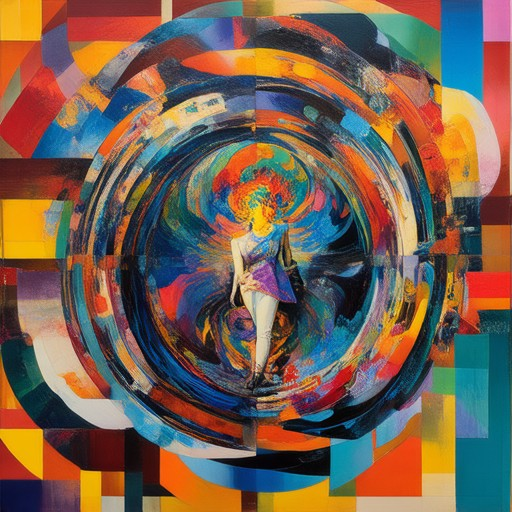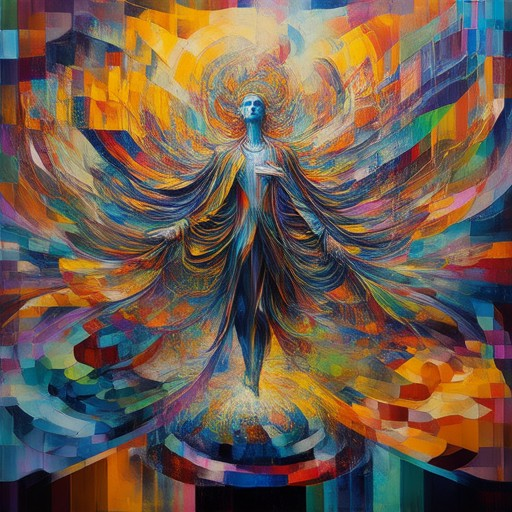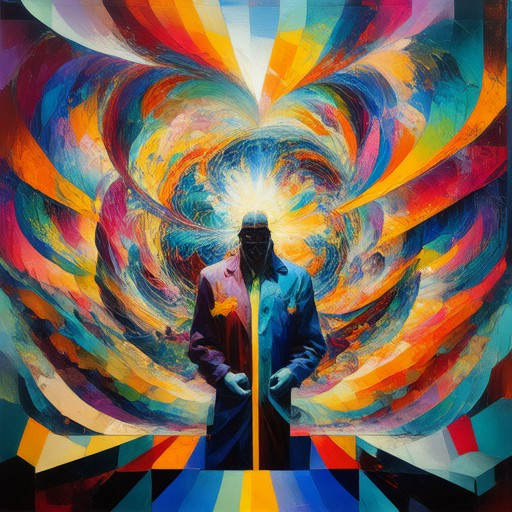Visual art is a dynamic and ever-evolving field that offers endless possibilities for creativity and self-expression. At its core, visual art encompasses a wide range of mediums, techniques, and styles, each contributing uniquely to the tapestry of human culture. For many, the journey into visual art begins with a curiosity about how to unlock their creative potential, explore different artistic methods, and produce meaningful work. Whether you’re an aspiring artist, a teacher looking to inspire young minds, or someone simply curious about the creative process, understanding and applying creative methods in visual art can open up a world of possibilities. From mastering fundamental techniques to experimenting with innovative approaches, this guide delves into the diverse strategies and practices that define the creative landscape of visual art.
Key Takeaways
– Unlock Creativity: Explore diverse artistic methods to express yourself uniquely.
– Master Visual Forms: Dive into Painting, Sculpture, Photography, and Digital Art to capture moments and stories.
– Techniques for Expression: Utilize Drawing, Painting, Sculpture, Printmaking, and Photography to innovate and inspire.
– Broaden Your Horizons: Discover Dance, Drama, Music, and Visual Art to enrich your life and culture.

What is the Creative Process in Visual Art?
The creative process in visual art is a multifaceted journey that involves several distinct stages, each contributing to the creation of a meaningful artwork. While the exact steps may vary depending on the artist and the medium, there are common elements that define this process.
Here’s a breakdown of the key stages involved in the creative process:
- Observation and Inspiration
- The process often begins with observing the world around us, whether through nature, people, or everyday objects.
- Artists may draw inspiration from emotions, experiences, or ideas that resonate with them personally.
- Researching different art movements, styles, or techniques can also spark creativity and provide direction.
- During this phase, artists might brainstorm concepts, sketch preliminary ideas, or explore different perspectives on a theme.
- This stage is crucial as it allows for experimentation and the exploration of diverse creative avenues.
- Sketchbooks are often used to document these early ideas and evolve them into something more concrete.
- Developing a plan or outline helps structure the artwork, ensuring that the final piece has a clear vision and purpose.
- Choosing the medium, tools, and materials that best suit the idea is an important step in this phase.
- Researching the technical aspects of the chosen medium, such as how paint interacts with canvas or how clay works with a potter’s wheel, is essential.
- This is where the actual creation happens, translating the initial ideas into a tangible artwork.
- Artist may face challenges such as technical difficulties or creative blocks, requiring patience and persistence.
- Feedback loops are common, where artists revisit their work, make adjustments, and refine details to achieve their vision.
- After completing the artwork, artists often take time to reflect on what was created and how effectively it communicates their intended message.
- Evaluating strengths and weaknesses helps identify areas for improvement and informs future projects.
- Sharing the artwork with others, whether through exhibitions, galleries, or online platforms, provides valuable feedback and exposure.
The creative process is deeply personal and varies greatly between artists. What matters most is the ability to connect emotionally with the artwork and communicate a unique perspective to the audience.
What Are the 7 Elements of Visual Art?
The 7 fundamental elements of visual art are essential tools that every artist uses to create meaningful and impactful works. Understanding these elements can help you analyze and appreciate art more deeply.
- Shape : The basic form or outline of an object, figure, or composition. Shapes provide structure and can convey ideas, emotions, or narratives. Common shapes include circles, squares, triangles, and rectangles.
- Line : A straight or curved mark that defines edges, creates movement, or establishes perspective. Lines can be thick or thin, vertical or horizontal, and can be used to build form or emphasize certain parts of a composition.
- Space : The area around and between objects, figures, or shapes. Proper use of space creates balance, depth, and interest in a artwork. Negative space (empty space) can be just as important as positive space (the subject matter).
- Form : The three-dimensional aspect of an object or figure. Form gives a sense of reality and volume, helping viewers visualize the subject more convincingly.
- Texture : The surface quality or feel of an object, figure, or pattern. Texture can be smooth, rough, flat, or raised, adding depth and detail to a artwork.
- Value : The lightness or darkness of colors in a artwork. Value helps establish depth, harmony, and mood, guiding the viewer’s eye through the composition.
- Color : The element that adds emotion, atmosphere, and vibrancy to a artwork. Colors can create warm or cool tones, evoke feelings, and interact in ways that enhance the overall impact of the piece.
By mastering these elements, artists can express their creativity and tell stories that resonate with audiences.

The 5 Cs of Art
The concept of the “5 Cs of Art” is often used to describe the essential elements that define the art world and its practices. These Cs provide a framework for understanding the dynamics of art creation, appreciation, and cultural impact. Below is a detailed breakdown of each component:
- Collection : A collection refers to the gathering and ownership of art pieces. Personal collections allow individuals to curate their own unique showcases, while public collections, such as those in museums, preserve and display artwork for broader access. Digital platforms have made collecting art more accessible, enabling people to build virtual collections and explore diverse artistic movements.
- Community : The art community encompasses the collective body of artists, collectors, dealers, critics, and institutions that contribute to the art world. Online forums, social media groups, and art fairs provide opportunities for artists to connect, share ideas, and collaborate. Building a strong community fosters innovation and supports emerging talents.
- Culture : Art is deeply intertwined with cultural identity. Different cultures have unique artistic expressions, from traditional paintings to modern installations. The globalized nature of contemporary art allows for cross-cultural dialogue, blending styles and perspectives that challenge and enrich traditional norms. Cultural exchange often drives artistic evolution and expands the audience for art.
- Collaboration : Artists frequently work together, either as part of collaborative projects or through partnerships with galleries, museums, or other entities. Collaborative efforts can lead to innovative works and provide opportunities for artists to grow their networks. Such collaborations benefit both participants and the art market by introducing fresh perspectives and expanding reach.
- Creativity : At the core of art lies creativity—the ability to think critically, imagine, and express ideas visually. Techniques, tools, and technologies evolve, offering new avenues for artists to explore their craft. Creativity is both a personal journey and a reflection of cultural shifts, driving the continuous transformation of the art world.
By understanding these five Cs, both newcomers and seasoned art enthusiasts can gain insight into the multifaceted nature of art and its enduring significance. Explore further with Artful Journey ‘s comprehensive guides on various art forms and techniques.

Four Forms of Visual Arts
- Painting : A traditional medium involving the creation of images on surfaces like canvas, paper, or walls, often using paints, colors, and brushes.
- Sculpture : Three-dimensional artwork created by shaping materials like clay, stone, metal, or wood to form statues, figures, or abstract shapes.
- Photography : The process of capturing and recording images using photographic film or digital sensors, often used to create still life, portraits, or landscapes.
- Digital Art : Art created using electronic tools like computers, software, or tablets, often involving graphic design, illustration, or digital painting.
Visual Arts Techniques
The field of visual arts encompasses a vast array of techniques and mediums that allow artists to express creativity and convey ideas. Here are some of the primary techniques used in visual arts:
- Drawing : Drawing is one of the most fundamental techniques in visual arts. It involves creating images using lines, shapes, and shading on paper, canvas, or digital platforms. Drawings can be abstract or representational, serving as a basis for further artwork.
- Painting : Painting involves applying paint to surfaces such as canvas, wood, or metal. Techniques can vary widely, including oil painting, watercolor, acrylic, and digital painting. Each medium offers unique properties and requires different skills.
- Sculpture : Sculpture is the creation of three-dimensional objects, often from materials like clay, stone, metal, or wood. Artists manipulate these materials to bring their visions to life, resulting in static or kinetic works of art.
- Printmaking : Printmaking involves creating images on paper or other surfaces using printing techniques. Common methods include lithography, etching, screen printing, and relief printing. Printmakers often combine multiple media to achieve unique effects.
- Photography : Photography captures light and shadows to create images on film or digitally. Techniques can range from candid shots to studio portraits, landscape photography, and experimental styles like HDR or infrared photography.
These techniques provide artists with endless possibilities for expression and innovation. Whether working traditionally or digitally, the visual arts continue to evolve, offering fresh perspectives and challenges for creators worldwide.
For further exploration, check out our art courses and discover more resources to enhance your artistic journey. Learn about advanced techniques, get inspired by artist profiles, and find tips for improving your craft.

The Four Creative Arts
The term “creative arts” encompasses a diverse range of disciplines that foster innovation, self-expression, and appreciation for aesthetic value. Among the most prominent fields are dance, drama, music, and visual art. These subjects not only provide personal enrichment but also play a vital role in cultural preservation and societal development.
1. Dance
Dance serves as a dynamic form of expression, combining movement, rhythm, and storytelling. It can be performed in various styles, including classical ballet, contemporary, hip-hop, and folk dances. Dance classes often emphasize technique, coordination, and creativity, allowing individuals to explore their bodies’ potential while connecting with others through movement.
2. Drama
Drama involves the creation and interpretation of dramatic works, such as plays, musicals, and improvisational performances. It encourages actors and playwrights to think critically, develop characters, and convey emotions effectively. Drama also fosters teamwork, communication, and emotional intelligence, making it a valuable tool for personal growth and social interaction.
3. Music
Music is a universal language that transcends boundaries, evoking emotions and bringing people together. It encompasses a wide range of genres, from classical compositions to modern beats. Learning to play or appreciate music enhances cognitive skills, memory retention, and emotional well-being. Whether through performing, composing, or simply listening, music enriches life experiences.
4. Visual Art
Visual art includes painting, drawing, sculpture, photography, and digital media. These mediums allow artists to communicate ideas, explore themes, and capture beauty. Artistic expression helps cultivate imagination, problem-solving abilities, and a deeper understanding of the world around us. It also serves as a means of preserving history and inspiring future generations.
By engaging with these creative arts, individuals can unlock their potential, find joy, and contribute positively to their communities. Each art form offers unique opportunities for self-discovery and personal growth, making them invaluable components of a well-rounded education and life experience.




0 Comments